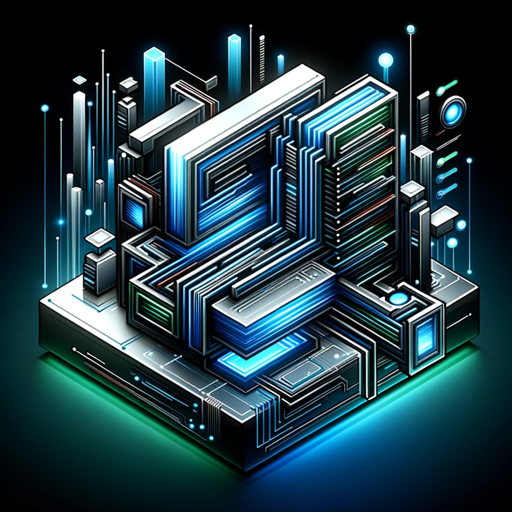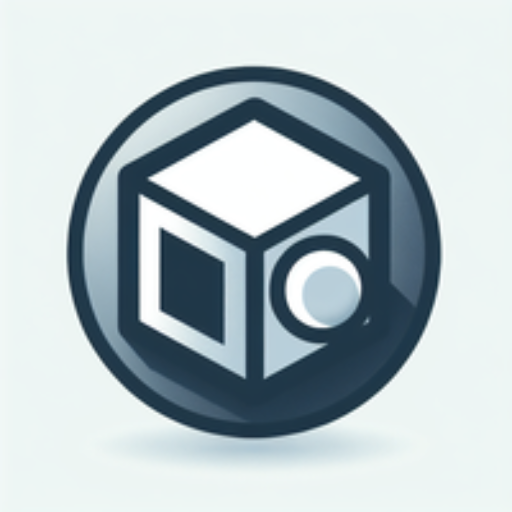Blazor .net 8-AI-powered Blazor web framework.
Build web apps with AI-driven .NET 8.
A code helper specific to Blazor in .net 8
Show me how to reference a component.
Related Tools

C# Expert
Advanced C# programming insights and best practices

.NET 開發人員助手
針對經驗豐富的開發人員提供進階的 .NET 建議

NextJS
⭐️ 4.2ㆍAdvanced Next.js 14, 13 & 12 Typescript/JS copilot [+ App Router], assistant and project generator with a focus on responsive, beautiful, and scalable UI. Write clean code and become a much faster developer.

C# (Csharp)
Your personal highly sophisticated C# (Csharp) language copilot, with a focus on efficient, scalable and high-quality production C# code.

.NET Companion
Expert in .NET and software architecture, guiding in code and design.
C# Expert
Direct C# expert for precise, actionable coding advice.
20.0 / 5 (200 votes)
Introduction to Blazor .NET 8
Blazor .NET 8 is the latest iteration of Microsoft's Blazor framework, a part of the ASP.NET Core ecosystem. Blazor enables developers to build interactive web applications using C# and .NET instead of JavaScript. This framework is designed to bridge the gap between client-side and server-side development, allowing for the creation of full-stack web applications with a unified codebase. Blazor .NET 8 continues to enhance this vision with improved performance, new components, and better integration with modern web standards. Key design purposes include enabling rapid development, ensuring maintainability through reusable components, and offering a consistent programming model across web and desktop applications. For example, Blazor can be used to create single-page applications (SPAs) that run entirely in the browser via WebAssembly or can leverage server-side rendering for dynamic content.

Main Functions of Blazor .NET 8
Component-Based Architecture
Example
Developers can create reusable UI components that encapsulate markup, logic, and styles. These components can be shared across multiple projects or used within different parts of the same application.
Scenario
An enterprise application where various departments need custom dashboards. Each department's dashboard can be built using shared components like data grids, charts, and forms, allowing for consistency and reusability.
WebAssembly and Server-Side Hosting Models
Example
Blazor .NET 8 supports both client-side WebAssembly and server-side hosting models, allowing developers to choose the best approach for their applications.
Scenario
A client-side Blazor WebAssembly app can be used for building highly interactive applications that need to run offline or have real-time client-side data processing, such as a progressive web app (PWA). In contrast, a server-side Blazor app can be ideal for scenarios requiring rapid development and ease of deployment, such as internal business tools or admin dashboards.
Integration with .NET 8 and Identity API Endpoints
Example
Blazor .NET 8 seamlessly integrates with the new Identity API Endpoints introduced in .NET 8, enabling secure user authentication and authorization mechanisms within applications.
Scenario
A secure e-commerce platform can leverage these Identity API Endpoints for managing user sign-up, sign-in, and role-based access control, ensuring that only authenticated users can access sensitive information or perform transactions.
Ideal Users of Blazor .NET 8
Full-Stack .NET Developers
These developers benefit from Blazor .NET 8 by using their existing knowledge of C# and .NET to build both the front-end and back-end of web applications. Blazor allows them to stay within a familiar ecosystem while developing modern web apps, reducing the need to learn JavaScript frameworks.
Enterprise Application Developers
Blazor .NET 8 is ideal for developers working in enterprise environments who need to build complex, data-driven applications. Its component-based architecture and integration with the broader .NET ecosystem make it suitable for developing scalable, maintainable, and secure enterprise applications.

How to Use Blazor .NET 8
Step 1
Visit aichatonline.org for a free trial without login, with no need for ChatGPT Plus.
Step 2
Install the .NET 8 SDK from the official .NET website to ensure you have the latest tools for developing Blazor applications.
Step 3
Create a new Blazor project in Visual Studio or Visual Studio Code using the 'Blazor WebAssembly App' template. Customize the project according to your requirements.
Step 4
Develop your Blazor application by utilizing components, services, and routing. Leverage .NET 8 features like server-side rendering, enhanced JavaScript interop, and more.
Step 5
Deploy your Blazor application to a suitable hosting environment, such as Azure or a self-hosted server, using built-in deployment tools.
Try other advanced and practical GPTs
APA 7 Citation Helper
AI-Powered Precision for Your APA Citations.

Shopware 6 Developer Assistant (v1.1.0)
AI-powered assistant for Shopware 6 developers.

Midjourney6 Muse
AI-powered creativity at your fingertips.

DAL-4
Hyper-detailed images powered by AI.

北京浮生记
AI-powered life simulation in Beijing.

MJ Prompt Generator
Craft perfect AI-powered image prompts.

Logo
AI-powered custom logo design

LOGO
AI-Powered Custom Logo Design

Logo Maker
AI-Powered Custom Logo Creation Made Easy

Photo Generator
AI-powered, hyper-realistic image creation

3D Model Generator Image Generator
AI-Powered 3D Model Generation Tool

Photo Restoration, Photo Enhancer
AI-powered restoration for timeless photos

- Web Development
- Cross-Platform
- Interactive UI
- Enterprise Apps
- PWA
Blazor .NET 8 Q&A
What is Blazor .NET 8?
Blazor .NET 8 is a web framework that enables developers to build interactive web applications using C# and .NET. It supports both WebAssembly and server-side hosting models.
What are the key new features in Blazor .NET 8?
Blazor .NET 8 introduces enhanced server-side rendering, improved JavaScript interoperability, and new identity API endpoints, providing a more robust development experience.
How does Blazor .NET 8 compare to other front-end frameworks?
Blazor .NET 8 allows developers to use C# across the entire stack, unlike other frameworks that require JavaScript. This reduces the need for context switching and streamlines development.
Can Blazor .NET 8 be used for mobile app development?
Yes, Blazor can be used with frameworks like MAUI to build cross-platform mobile applications, leveraging the same codebase for both web and mobile.
What are the common use cases for Blazor .NET 8?
Blazor .NET 8 is ideal for building enterprise-level web applications, progressive web apps (PWAs), and internal tools that require rich interactivity and integration with .NET backend systems.